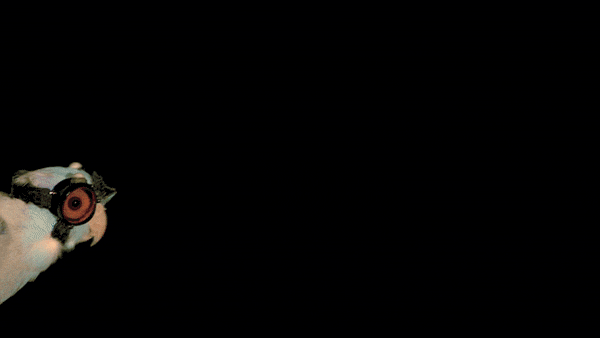Tiny Adorable Bird Goggles Allow Innovative Study of Flight
Stanford engineers wanted to measure lift forces, but first they had to protect their avian partner’s eyes.
:focal(2616x1160:2617x1161)/https://tf-cmsv2-smithsonianmag-media.s3.amazonaws.com/filer/bf/90/bf902c1e-0e68-4ff8-b6a0-e54e690472db/bird_with_laser_goggles_img_9648.jpeg)
Who among us can truly say we have not been waiting our whole lives for this news: Researchers have developed tiny safety goggles to study how birds fly.
More specifically, engineers at Stanford University are studying the vortices created at a bird’s wingtips. After more than a century of flight, there is still some debate about how lift is really generated on aircraft, which makes sense, since we don’t actually know much about how flight works in nature yet either. There are theories that supposedly predict the lift forces on flapping-wing animals—birds, bats, and insects—but it turns out to be extremely difficult to measure these forces in flight. In the past, tests have been done with wing-flapping robots and computer simulations, says David Lentink, head of the Lentink Lab at Stanford and co-author of the new study. “However, simulations and robots cannot replicate well how a bird flies, so we needed to test this with careful measurements for freely flying birds.” Now, for the first time, they have. The results of the study were published today in the journal Bioinspiration and Biomimetrics.
Wingtip vortices are tiny tornadoes generated at the tips of both aircraft and bird wings, where the airflows over and under the wing meet. We know many of you have wondered why some airliners have a bit of metal sticking up from the wingtip, because our 2001 article describing what winglets are and what they do is still one of our most popular. (Wingtip vortices create drag, so some airliners have winglets to disrupt the whirlwinds and save fuel.)
Vortices created by airplane wings can be studied quite easily in a wind tunnel. The airflow around a bird’s wing is a much tougher thing to observe, but being the kind of industrious researchers we’re all thankful for, the engineers at Stanford came up with a plan. They trained a relatively slow-flying bird—a parrotlet—to flap its way from one perch to another, a distance of about three feet, through a laser grid, with four cameras shooting 1,000 frames per second. To protect the bird from the lasers, team member Eric Gutierrez was tasked with designing a custom pair of 3D-printed safety goggles.
“We salvaged the lenses from professional laser goggles we wear ourselves for visualizing airflow with a laser sheet. Then we trained the parrotlet to fly between perches while wearing the ‘aviator goggles,’ in return for a few seeds as a reward,” Gutierrez explained in a press release. The unique avian protective wear allowed researchers to precisely measure for the first time the vortices birds create in flight.

It turns out the bird vortices “broke down violently and quickly about two or three wingbeats after they were generated,” said Lentink. This could only be measured because the goggles allowed the bird to fly through the laser grid under high-speed surveillance, which in turn allowed the team to measure directly the wake on the wing tips and trailing edges over the course of milliseconds. In previous studies of bird flight, researchers could only measure the wake a small distance behind the bird, or would have to rely on a single snapshot or time-averaged measurements. With the data the Stanford team collected, it’s now possible to calculate the lift force “generated by the bird at the moment it sets the air in motion,” said Lentink. The results showed that none of the three common models of lift calculated the actual lift generated by the bird. If researchers can improve these models, not only would they better understand the nature of flight, they might improve the design of micro-drones that make use of flapping-wing technology.
The Stanford team doesn’t have a definitive answer yet to explain how birds stay in the air, but they’ve been improving their system to take even more precise measurements and improve the lift models. And that will require more than one adorable parrotlet as a test subject. “We need a joint effort with people working on insects, bats, and birds,” says Lentink. We’ll report back with a photo gallery of the mini-goggled flying menagerie if and when that happens.